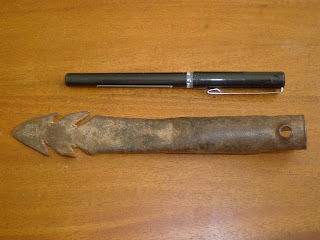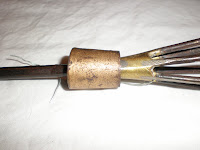I'm admitting I'm behind the curve here. I became familiar with eBay fairly early, but I did not become a serious eBayer until recently. I started selling books back in 2003 and have been selling progressively more in the interim. I think my first purchase was in fall 2002 - it might have been a lot of old youth bows and a workshop-made crossbow. Right now I purchase two or three items a month via eBay.
I've cut back lately. I don't pay for items with my checking account. Most of the time, I can make enough cash selling books and objects to place reasonable bids on many items. I've found it also helps to limit searching. I used to make several searches once a day (which even then would not find every item I'm interested in); I currently watch a couple of seller's items and occasionally search my saved seller's items.
My big, secret strategy for winning...I place several low bids on lots of items. I lose most of my auctions, but when I win them the price is right. If I end up winning more items than I'd expected or can afford, I sell the surplus (often for more than I paid for them). I don't bid on auctions manually (unless I'm away from my laptop and I have to bid with my phone). Instead, I use a sniping service to bid within the final 8 seconds of an auction. It pays to take advantage of best offer and buy it now options if possible.
I'm bidding on a whole bunch of knives, spears and arrows tonight and will report on the outcomes shortly.















